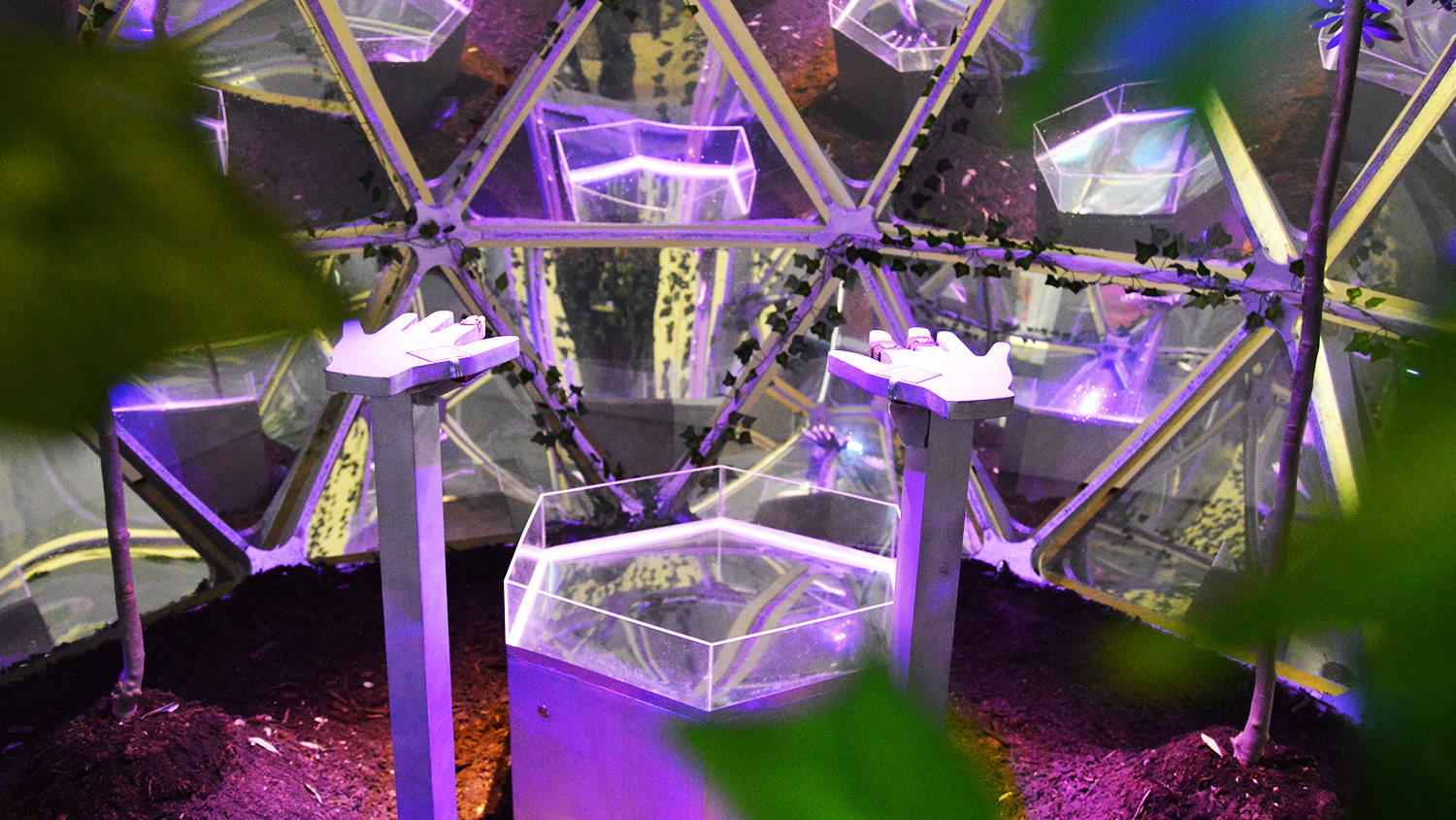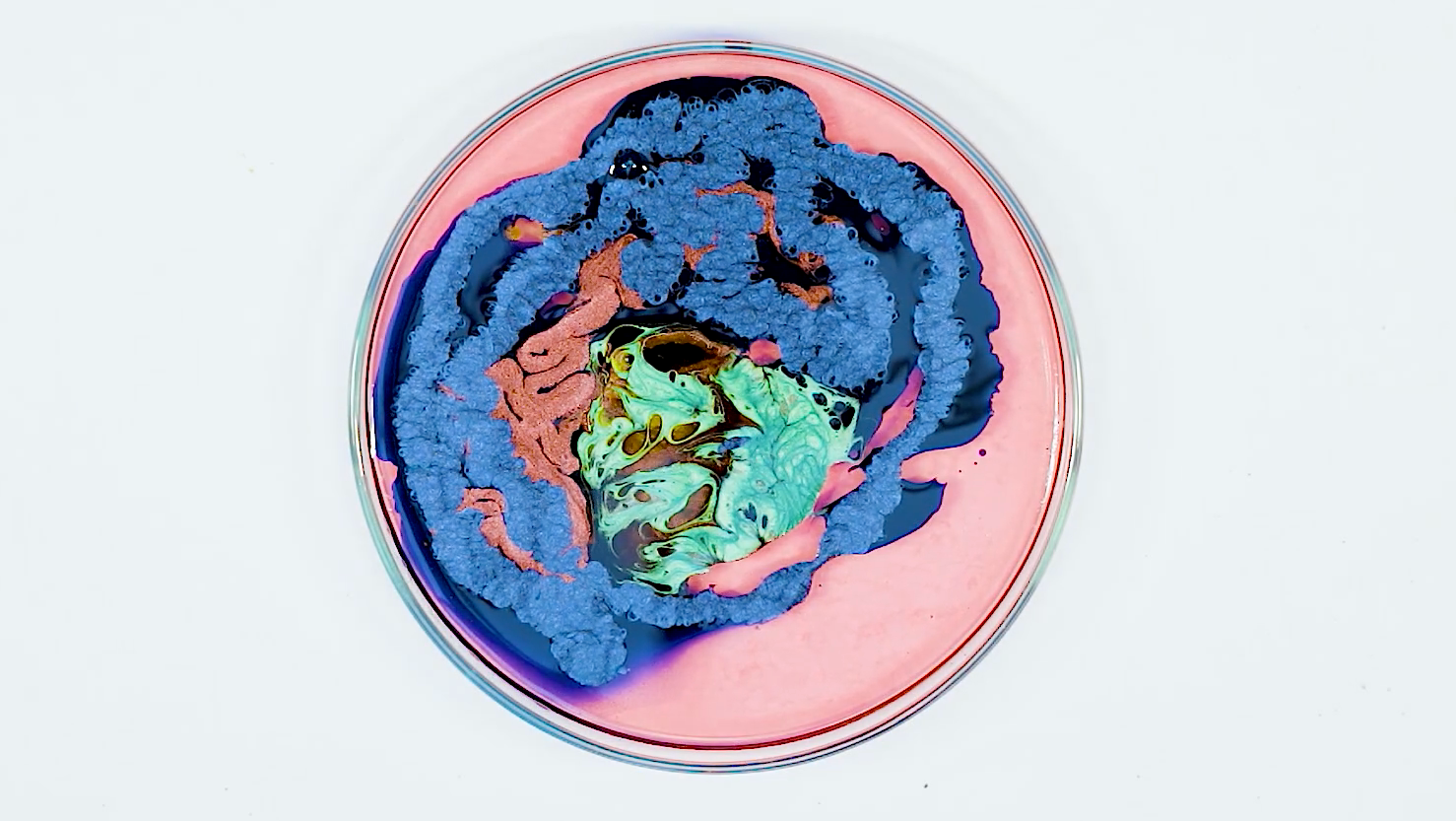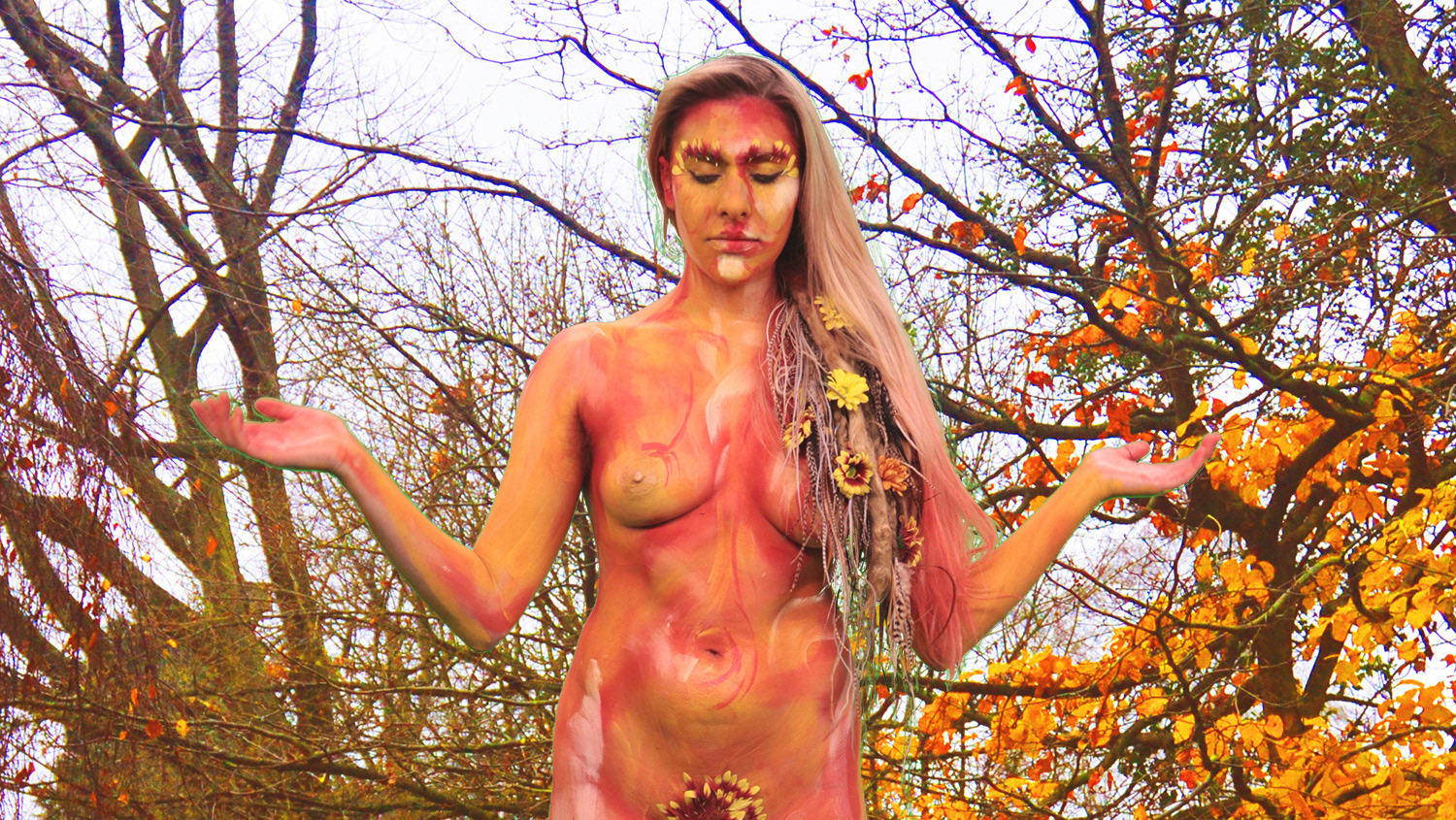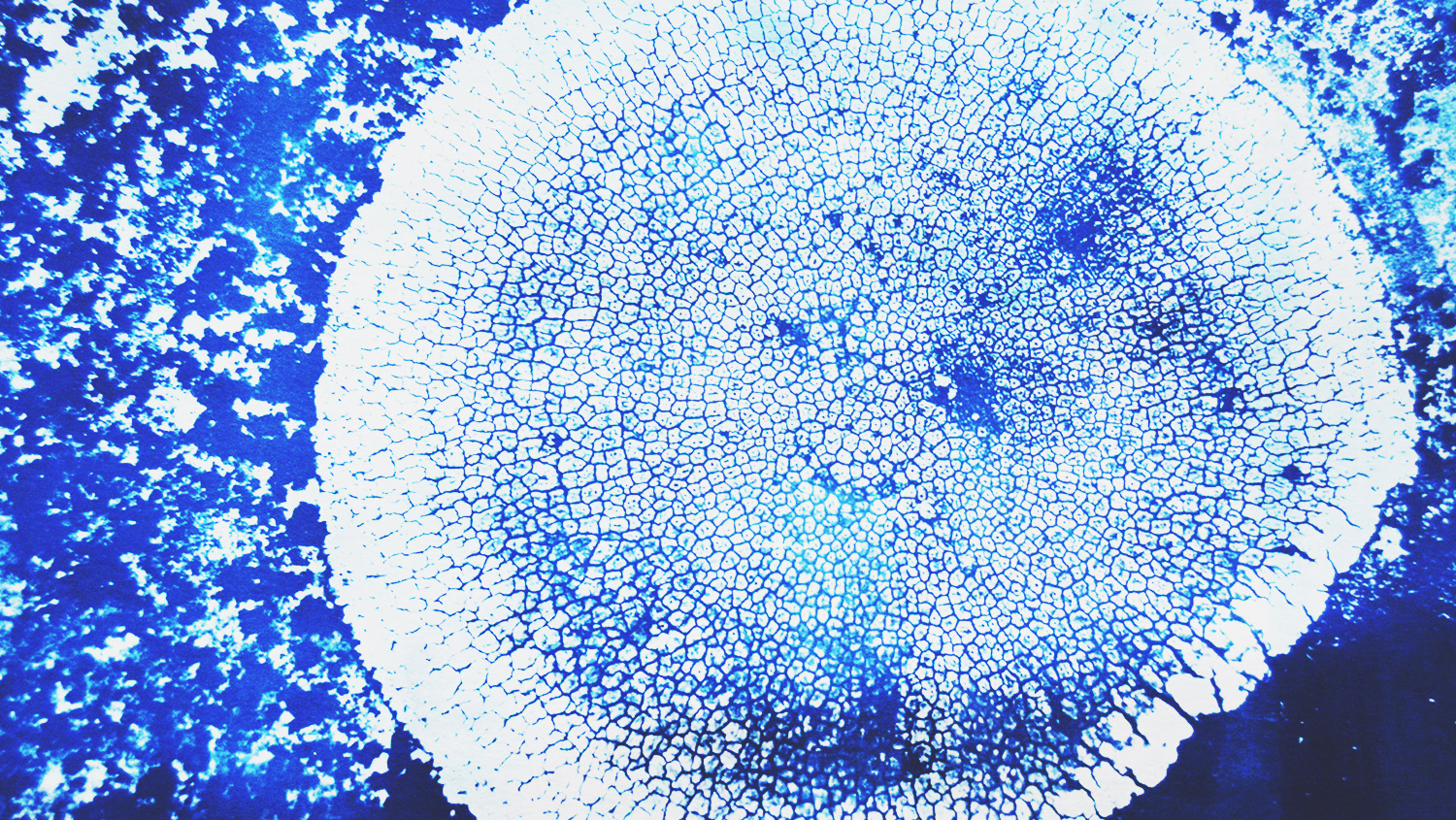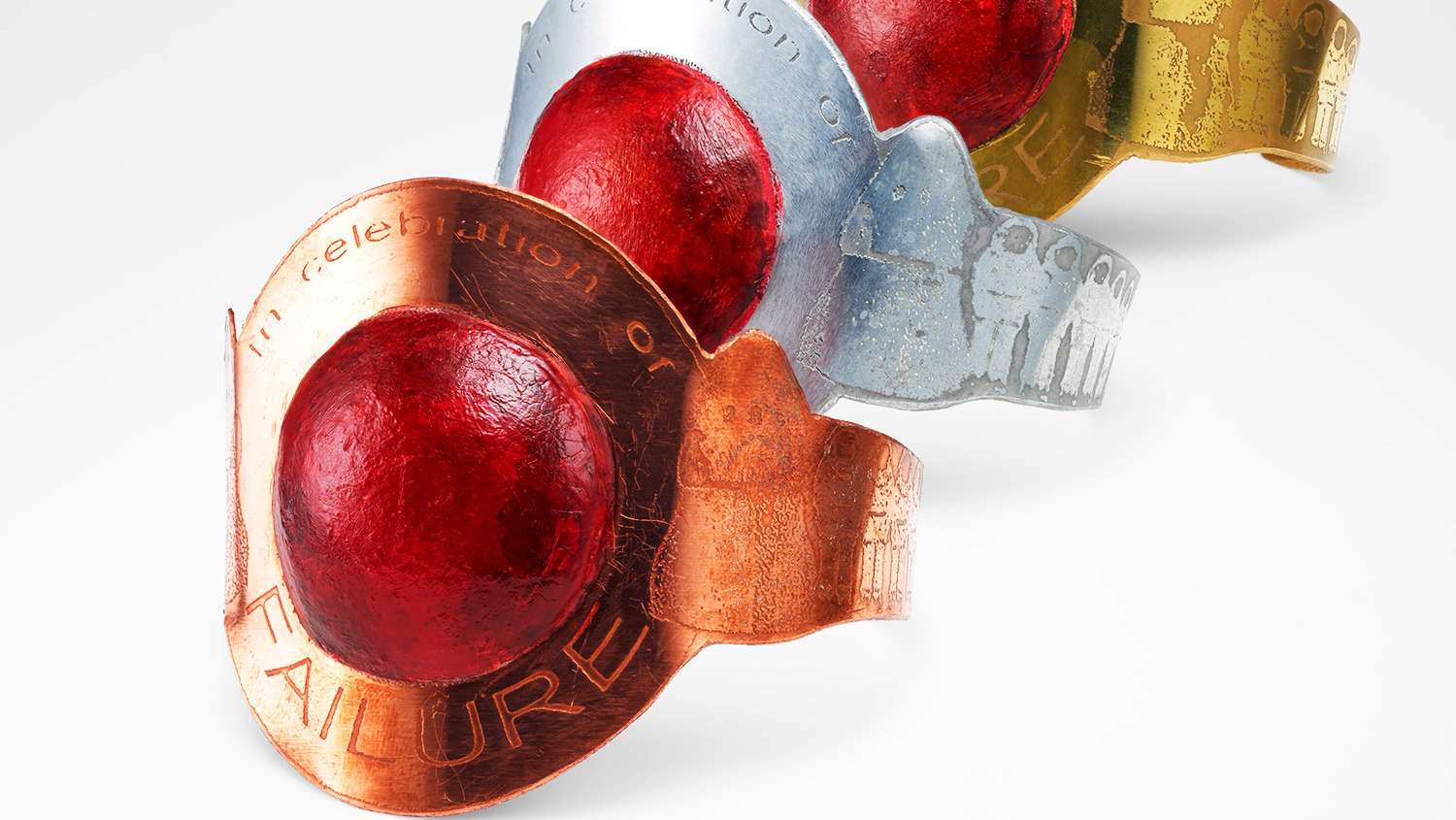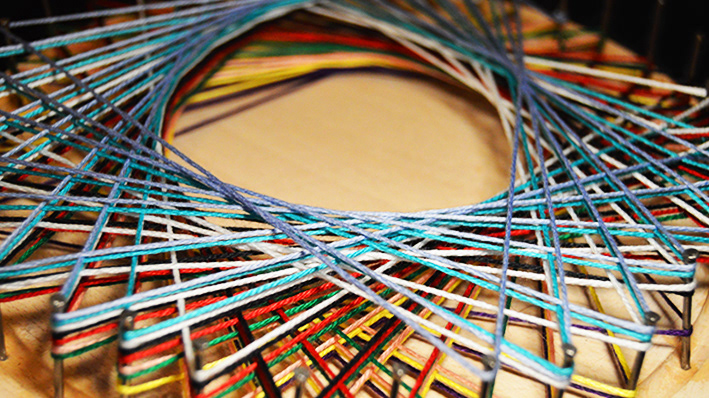
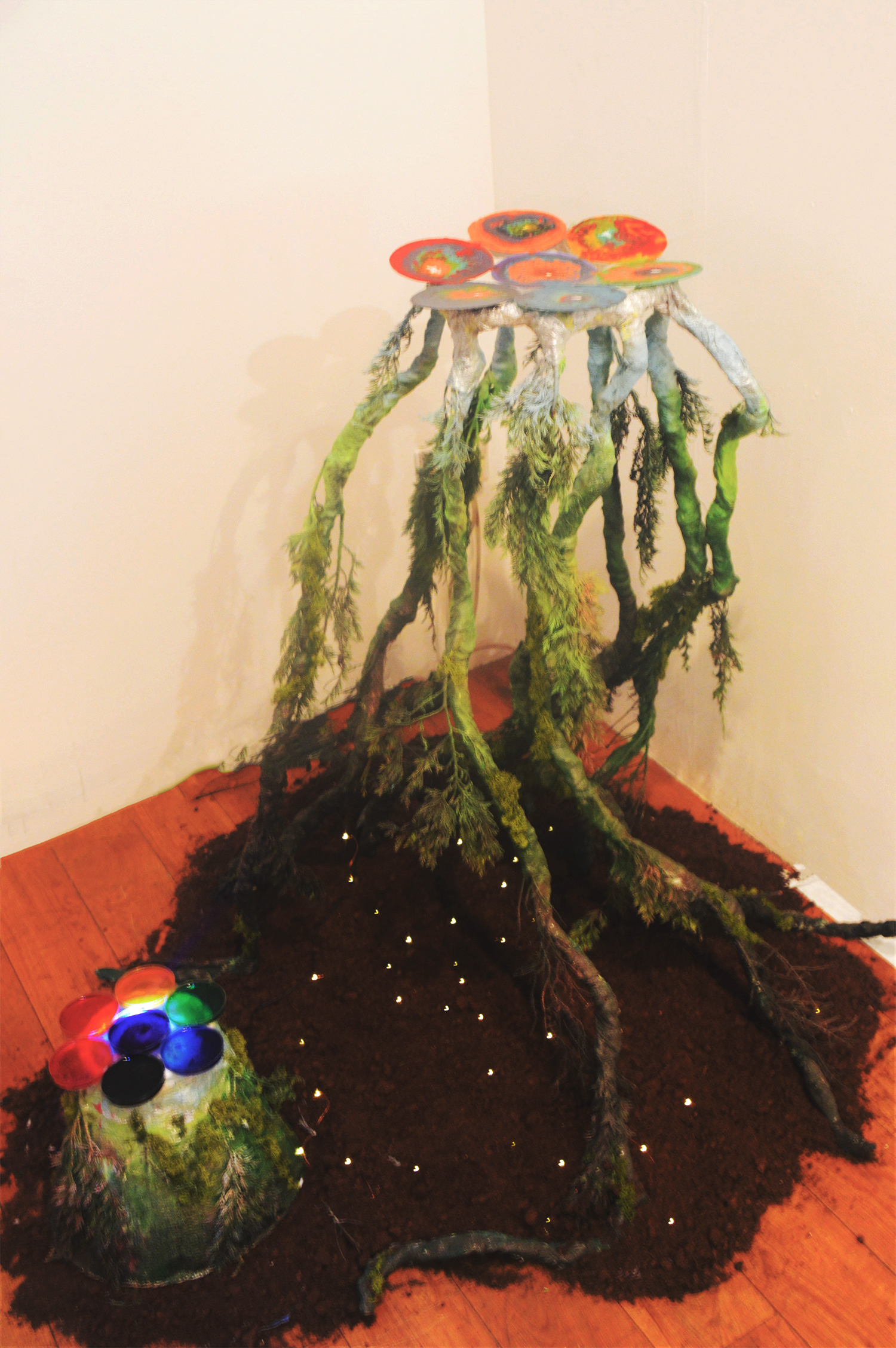



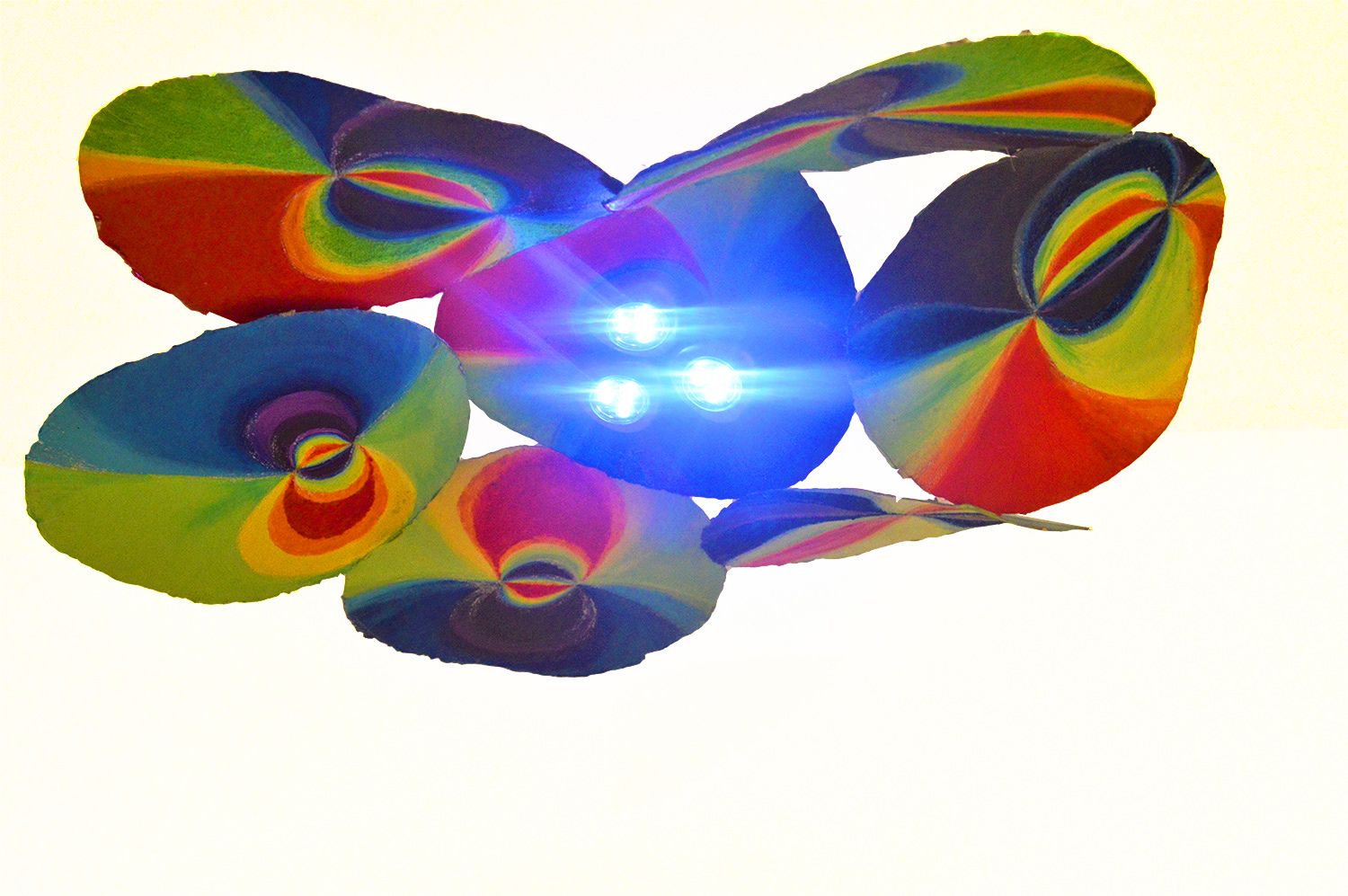
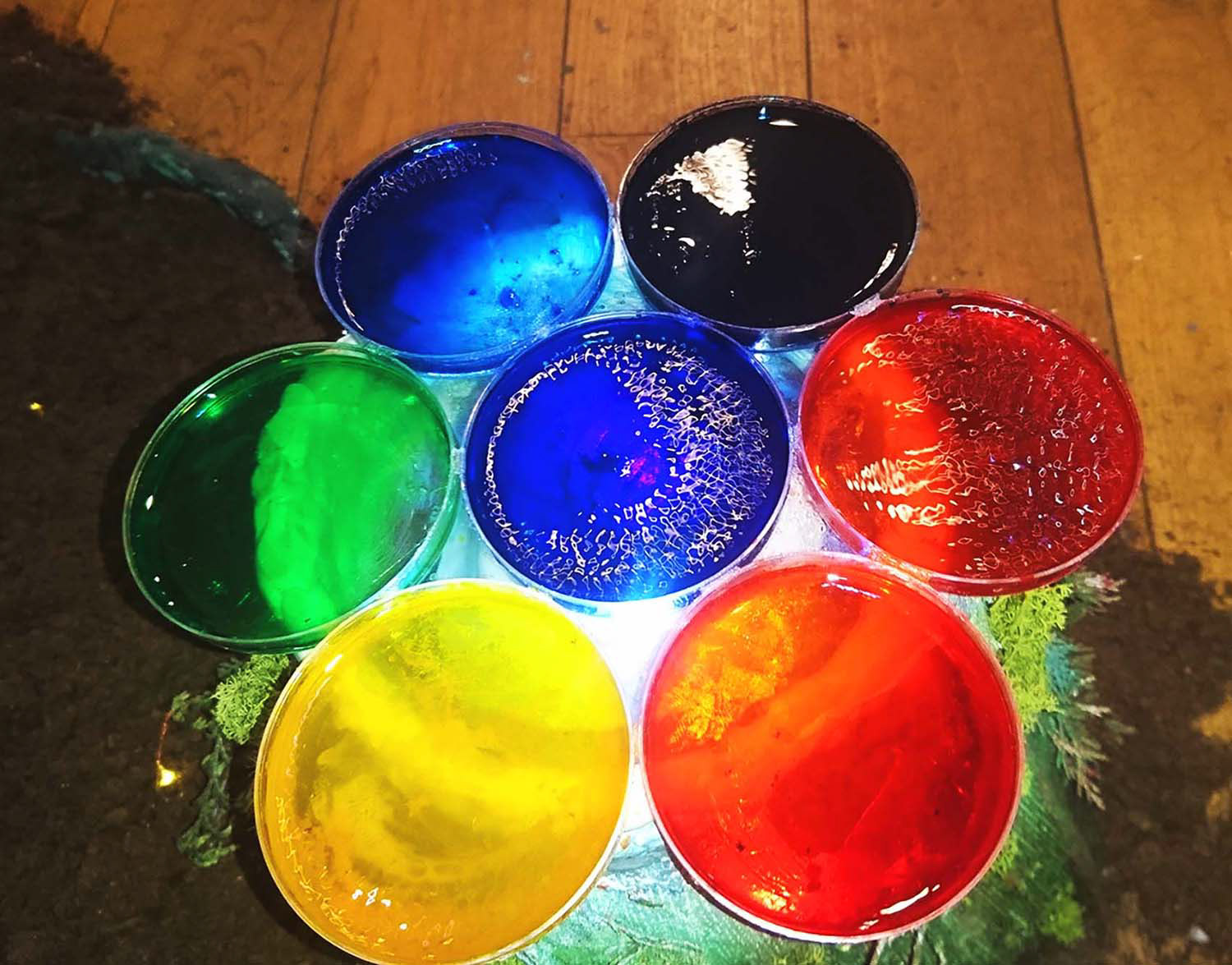

Soil, acetate, lights, sound, ink, paint, plaster, metal
The CLOUD series (2017) includes a sensory installation and sculptural artwork inspired by the Cosmics Leaving Outdoor Droplets (CLOUD) experiment at CERN, the centre for particle physics research in Geneva, Switzerland. The Team at CLOUD are investigating whether cosmic rays, charged particles from space, and biogenic vapour from trees can generate new aerosols, tiny particles suspended in the air that can grow into cloud droplets. Additional cloud cover is seen as beneficial as it has a cooling effect on the planet.
Following a visit to CERN, students from the MA Art and Science course held an exhibition and symposium to display and discuss artworks influenced by the research. Unseen (2017) was part of the CSM x CMS: Entangled exhibition at the Four Corners Gallery, Bethnal Green (June 2017). Drawing upon invisible but powerful natural forces like cosmic rays, biogenic vapours and aerosols, the installation considers how similar everyday phenomena like sound waves and light polarisation be experienced creatively.
An arborescent structure with eight legs, covered in green paint and fern stands on a mound of soil. It overlooks a small feature holding a plate made of seven petri dishes containing ink in the colours of the electromagnetic (EM) spectrum. Conceptually, this is linked to the piece of acetate lying atop the tree-like structure and a larger structure hanging from the ceiling above it, both in the same configuration of seven circles. The three demonstrate how mixed EM light from the sun passes through light filters represented by the circles, which only let particular wavelengths through and block the others, resulting in the separation of colours.
Under the pools of ink, a sound transducer generates vibrations, which rise by 10 Hertz increments each minute (from 50-120 Hertz). The vibrations create geometric patterns in the ink (cymatics) that are more intricate at higher frequencies. This visualisation of sound through the ink, and glowing lights in the surrounding soil, encourages the viewer to interact with audio-visual phenomena in a creative and playful way.
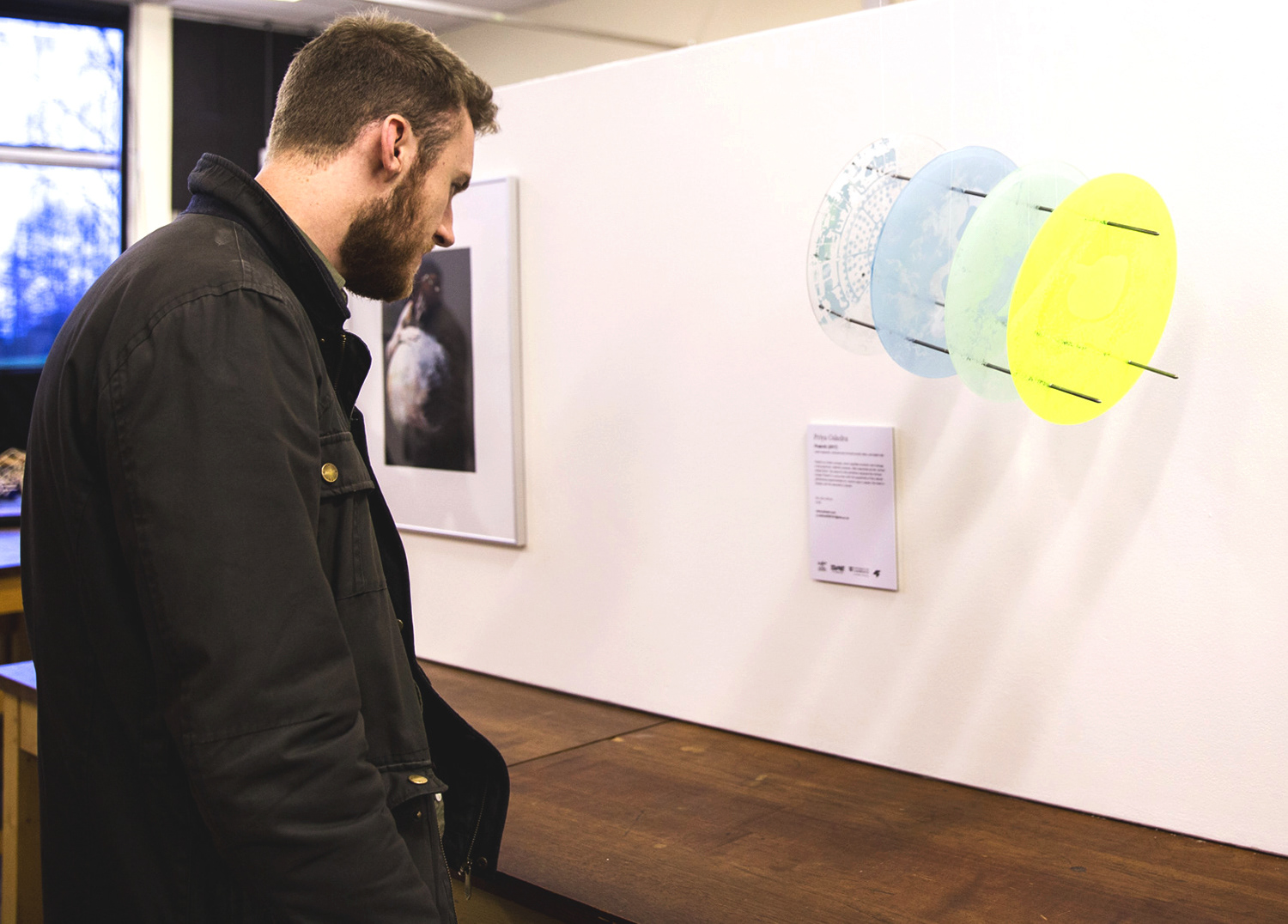
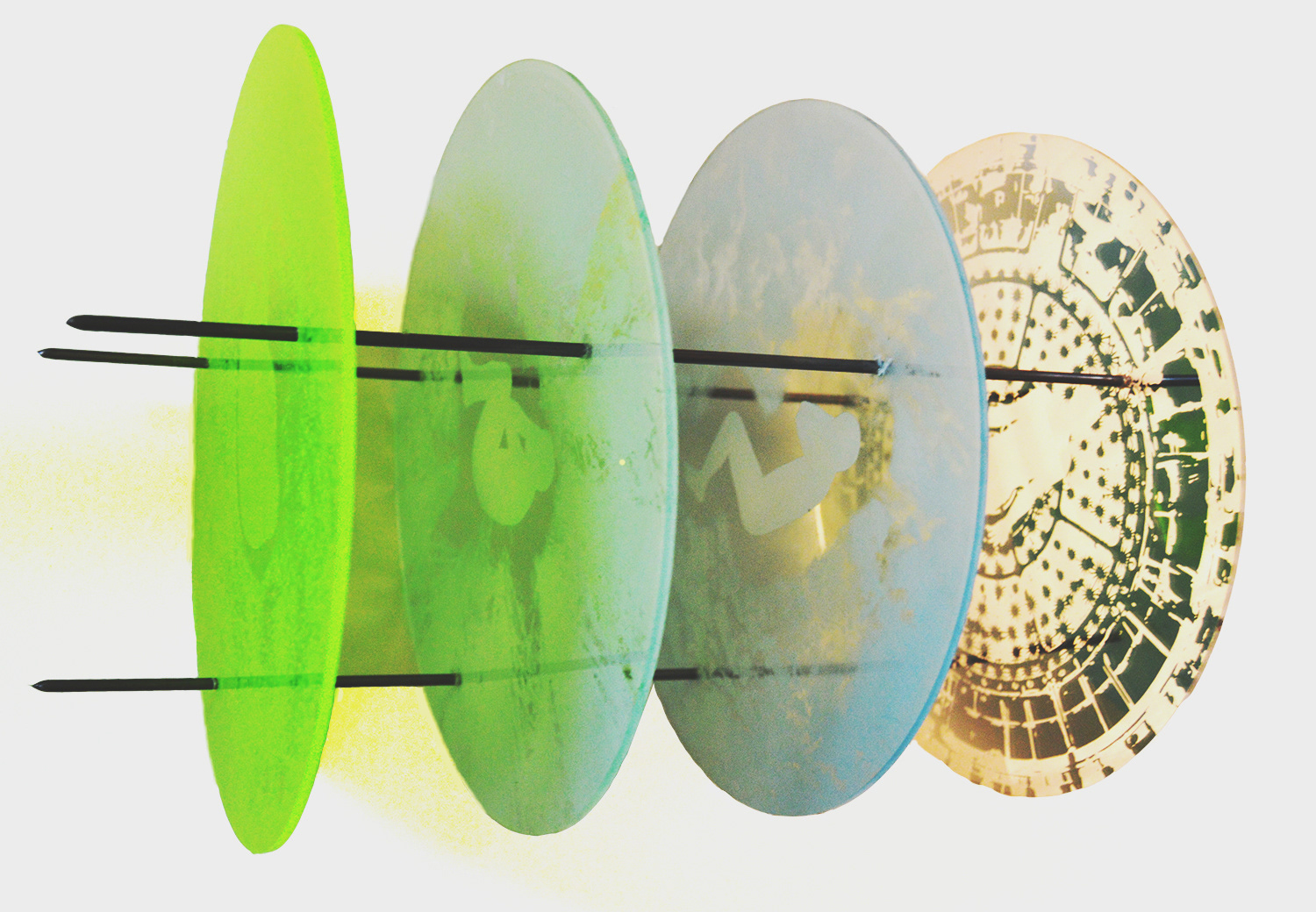
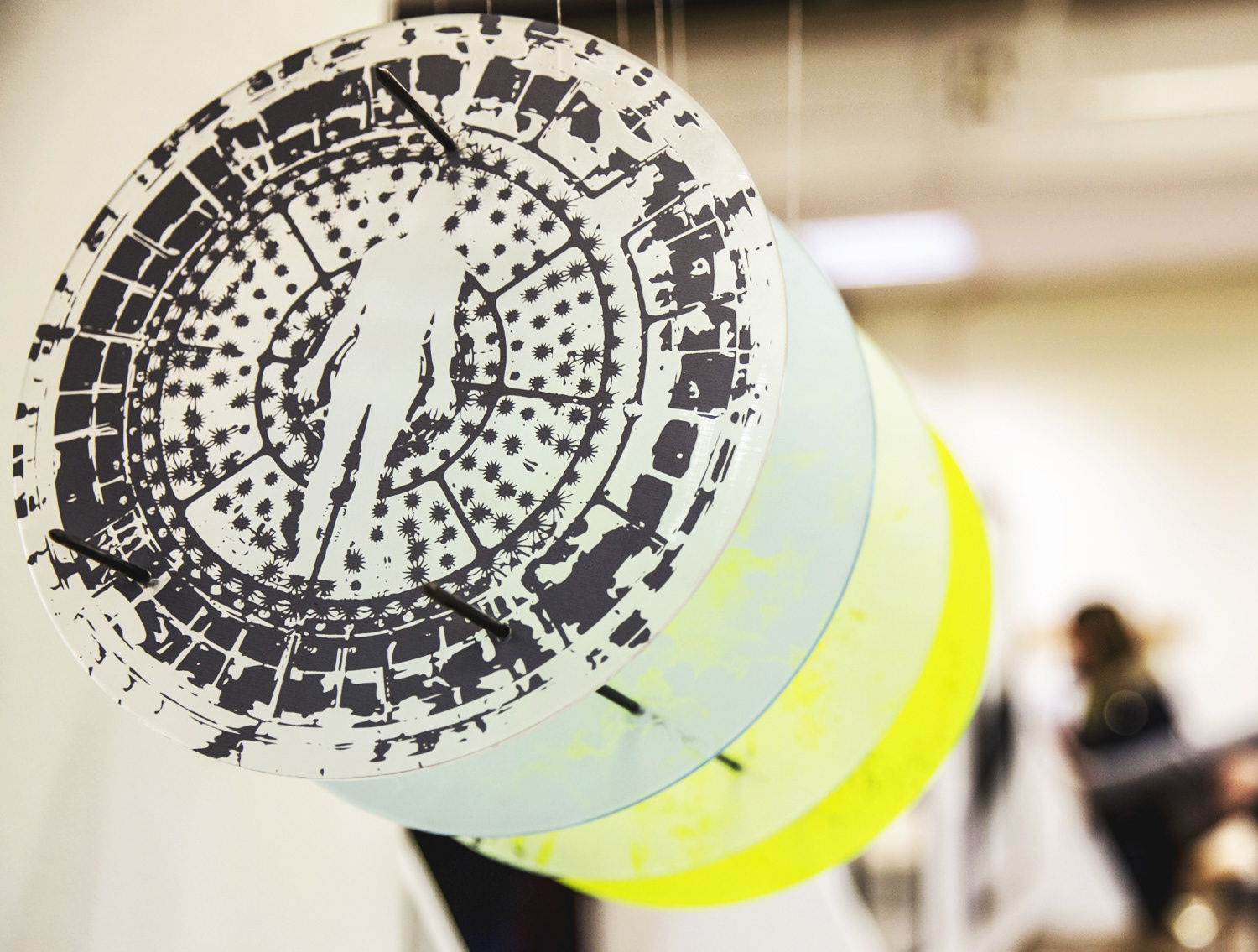
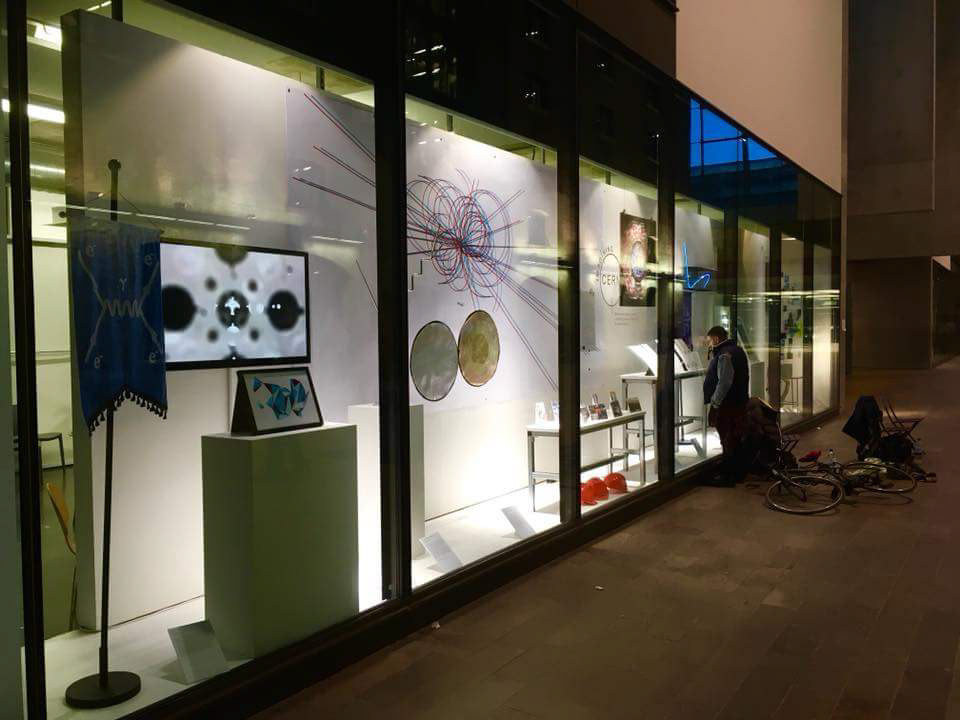
Prakriti (2017) is a sculpture composed of four transparent discs with laser-printed designs held together by three metal rods. It was exhibited as part of the Imaging CERN symposium and window display (November 2017) and SciArt at the Cavendish (March 2018).
In Hinduism, Prakriti is a primal, creative force, usually referring to the natural or original state of something, with pra meaning 'beginning' and kriti, 'creation' in Sanskrit. The natural components of the CLOUD experiment are illustrated on the discs including cosmic rays, trees, aerosols and the technology used to harness these sources of primal energy. A human figure is etched into the centre of each disc, starting in the foetal position on the first disc and uncurling to the shape of a person standing on the last disc. The figures represent an expansion of human understanding of the natural world and its inherent creative power. The metal rods connecting the discs highlight the interdependence of living beings with one another and surrounding natural forces.

